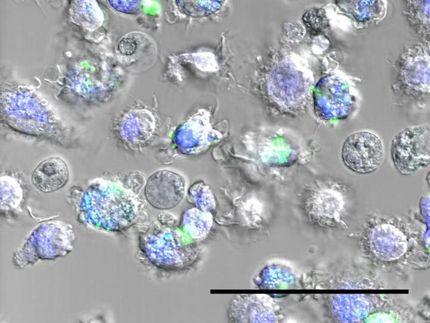The REACH regulation as an effective way of regulating nanomaterials
A new concept is to ensure safety in the supply chain and life cycle of nanomaterials
There is currently a need for better identification and assessment of potential hazards arising from nanomaterials for humans and their environment in the future. With this aim, the Federal Institute for Occupational Safety and Health (BAuA), the Federal Institute for Risk Assessment (BfR) and the Federal Environment Agency (UBA) have, at the suggestion of the Federal Environment Ministry, developed a proposal for amending the European Chemicals Regulation REACH. In their capacity as federal agencies, the BAuA, BfR and UBA are responsible for the REACH regulation.
The European REACH regulation already covers nanomaterials as chemical substances. However, the information that must be provided by the manufacturer or importer as part of the registration process does not address specific additional features of nanomaterials, fibres and powders. In cases where biopersistent particles or fibres are released, the currently required characterisation of substances under REACH is insufficient. Biopersistent dusts and fibres inhaled at the workplace can, in the long run, lead to chronic diseases of the respiratory tract. Nanomaterials have an enlarged surface and can exhibit modified chemical and physical properties when compared to conventional (bulk) chemicals.
With their proposal, the German government agencies illustrate how the specific information requirements for nanomaterials with their special properties, as well as ultrafine powders and fibres can be incorporated into REACH. In addition, the proposal also aims to equip REACH for the rapid developments in nanotechnology, to ensure that the precautionary principle will be guaranteed, and to accommodate new future insights into the probable detrimental effects of nanomaterials on humans and their environment. The proposal of the federal agencies additionally strives to improve the dissemination of information through safety data sheets to ensure nanomaterials are handled in a way that has minimal adverse impact on humans and the environment. As part of the REACH procedures, a risk-based evaluation of the specific properties of nanomaterials must, beyond the requested information for substance registration, be ensured in the dossier and substance evaluation as well as in possible authorization and restriction procedures.
If nanoscale forms of a chemical substance exist, they should, as a matter of principle, be registered together with the chemically identical bulk material. The additional nano-specific information required due to particle properties and related risks for humans and the environment must be assessed and documented independently. As a consequence of the extremely low powder density and often higher potency of effects of many nanomaterials, which even in small quantities can spread far and wide, the government agencies put lowering the tonnage limits for testing- and information obligations for manufacturers and importers up to discussion.
The proposal of the government agencies requires amendments to the REACH regulation. This notably applies to the annexes specifying the data requirements for substances. It would be beneficial to regulate the special testing and information requirements regarding the toxicology and ecotoxicology of nanomaterials as well as those on fibres and powders in a specific annex to the regulation. In addition, extensive characterisation of the materials is essential.
In October, the European Commission presented its “Second Regulatory Review on Nanomaterials”. The review regards REACH as suitable to regulate nanomaterials. The Commission also suggests amendments to the annexes and further explanations in the guidance for manufacturers and importers of nanomaterials. The announced report of the Commission on its review of the REACH regulation will provide a suitable framework for consultation on the required amendments. The proposal of the German government agencies now suggests a constructive way forward.
Most read news
Other news from the department politics & laws

Get the analytics and lab tech industry in your inbox
By submitting this form you agree that LUMITOS AG will send you the newsletter(s) selected above by email. Your data will not be passed on to third parties. Your data will be stored and processed in accordance with our data protection regulations. LUMITOS may contact you by email for the purpose of advertising or market and opinion surveys. You can revoke your consent at any time without giving reasons to LUMITOS AG, Ernst-Augustin-Str. 2, 12489 Berlin, Germany or by e-mail at revoke@lumitos.com with effect for the future. In addition, each email contains a link to unsubscribe from the corresponding newsletter.













































